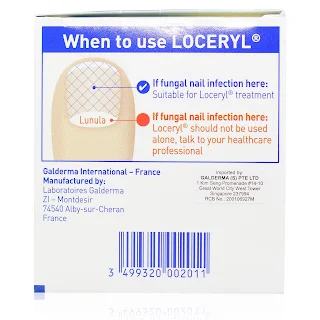Onychomycosis
Introduction
Onychomycosis, also known as tinea unguium, is defined as a chronic fungal infection of the fingernails or toenails (more common in toenails).
- The infection is common but probably underreported because of patient embarrassment or ignorance that they have an infection.
Clinical Features
As the infection evolves, the nail unit discolours, the nail plate distorts, and the nail bed and adjacent tissue may thicken.
Onychomycosis can be mild, with its only impact on quality of life being cosmetic.
- However, it can also cause pain, or be a reservoir of infection that can precipitate recurrent cellulitis in association with tinea of the feet.
Management
No treatment other than nail trimming may be appropriate for asymptomatic patients who are not bothered by the infected nail or who wish to avoid the possible effects of drug treatment.
Many topical nail preparations are available over the counter, e.g. clotrimazole lotion. However, they have limited efficacy and lack evidence for their use.
Topical amorolfine may be useful for treating early onychomycosis when involvement is limited to mild distal disease, or for superficial white onychomycosis.
- It is used weekly, and treatment continues until the affected nail(s) have regrown and are clear of infection.
- Treatment length is 6 months fingernails and 9-12 months for toenails.
- Should not be used by pregnant or breastfeeding women.
A systemic antifungal (e.g. oral terbinafine, fluconazole or itraconazole) is more effective than topical therapy and should be considered for patients with any of the following:
- Distal and lateral subungual onychomycosis involving >50% of the toenail
- Any involvement of lunula
- >3 or 4 nails involved
- A lack of response to topical therapy
- Candida onychomycosis
- Nondermatophyte onychomycosis
Oral drug regimens typically take 12 weeks of therapy for toenails, 6 weeks for fingernails and may include blood tests monitoring.
- Oral antifungal treatments should be used with caution in high-risk patient populations (e.g. chronic liver disease, chronic alcohol use, polypharmacy) because of potential clinically significant drug interactions and risk of hepatotoxicity.
External Links
- Comparative efficacy and safety of amorolfine nail lacquer 5% in onychomycosis, once-weekly versus twice-weekly, 1992
- Patient-reported outcomes from two randomised studies comparing once-weekly application of amorolfine 5% nail lacquer to other methods of topical treatment in distal and lateral subungual onychomycosis, 2017


Comments
Post a Comment